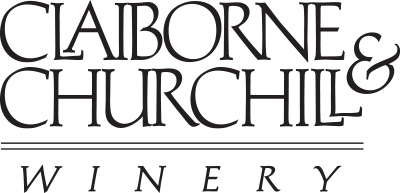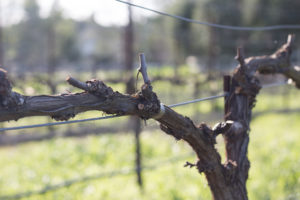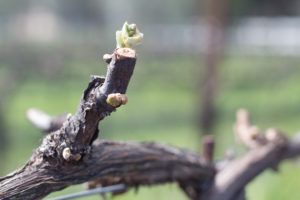We are finally starting to feel the spring weather on the Central Coast. It is so refreshing after the winter season we’ve had. The region was refreshed with many storms after years of drought. These storms were great for our dormant vines, as they flushed the toxins and salts in the top soil lower past the root zone and replenished our water storage. The recent sunshine has left the hills of the Edna Valley so green and wildflowers are starting to bloom. As the cherry trees are filled with flowers, we know something else is coming: bud break! In this post, we want to share what has been happening in the vineyard since Harvest 2016.
After Harvest:
As we were finishing up all of the hard work that goes into harvest, we began to prepare the vines for the upcoming winter season. The vines had been under a lot of stress from producing the fruit we use to make our wines. After harvest we give them some water and nutrients over the next two weeks to supplement and prepare the vines for the upcoming dormant season. This process is what all perennials go through and resembles hibernation where little energy is used.
Pruning
In late February we begin to think about pruning the vines. Since we do not have any frost protection, we wait as long as possible to prune the vines. We are able to do this since we have so few acres and it doesn’t take much time to get through all of our vines. The old wood is removed to maximize the amount of one year old wood (fruiting wood) and minimize vine density thus encouraging airflow and circulation.
Bud Break
After pruning and the soil and weather warm up, you typically see bud break start to happen. Here in SLO Wine Country bud break occurs sooner than most AVA’s in North America. Typically, bud break is seen first in the Santa Maria and Arroyo Grande valleys, then in the Edna Valley, and lastly in Paso Robles. At Claiborne & Churchill our vines have just started to burst from the warm weather over the past weekend.
Preparing for Harvest:
In the next few weeks, we will mow the cover crop and disk the cuttings back into the soil. We planted barley between the rows to add nitrogen back into the soil and also to keep the topsoil from eroding. Cover crops like barley attract beneficial insects and help maintain the soil structure during the rainy season. We will start to see rapid growth on the vines as shoots and leaves begin to form. After that, we will see flowering then berry set. The berries will begin to grow and start to look like little clusters. The red varieties will undergo veraison, when the berries change color from green to red. Over the next few months the grapes will ripen and develop tannins and phenolic compounds which contribute to the complex flavors found in wine. Before we know it, the fruit will be ready for 2017 Harvest!
Stay tuned for more production updates throughout our growing season!



